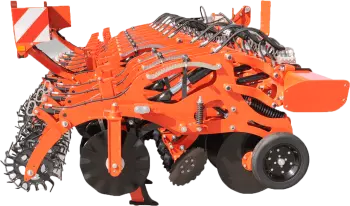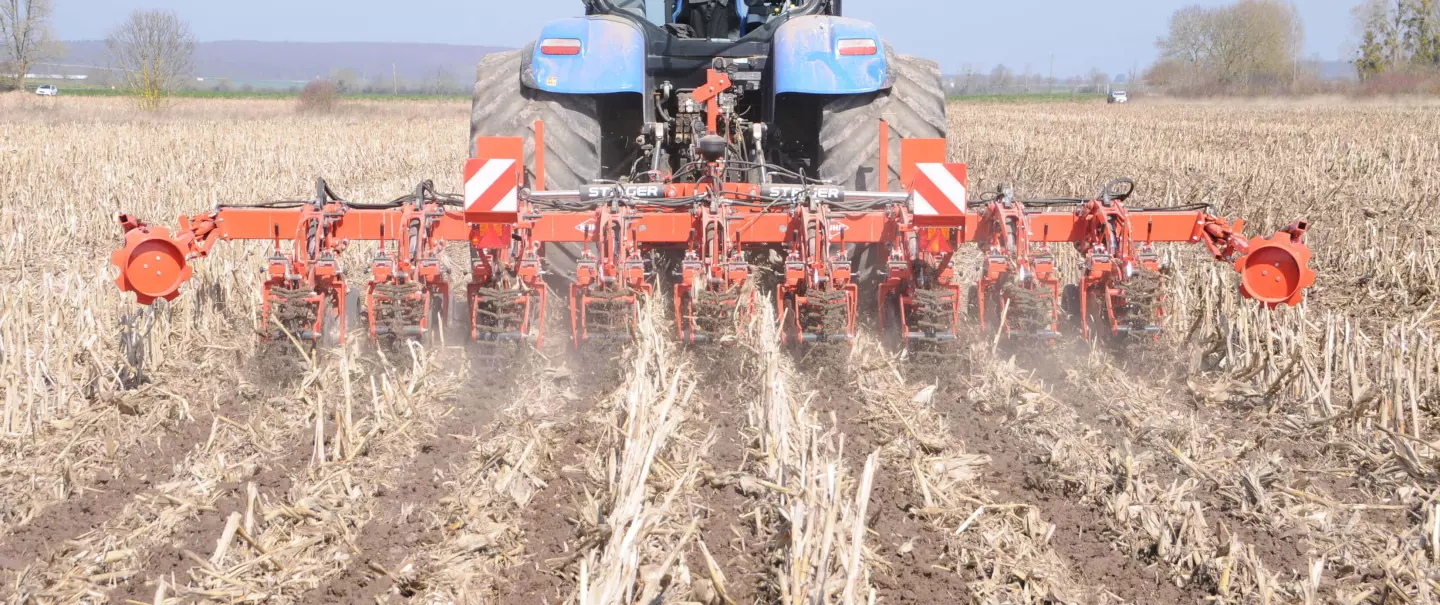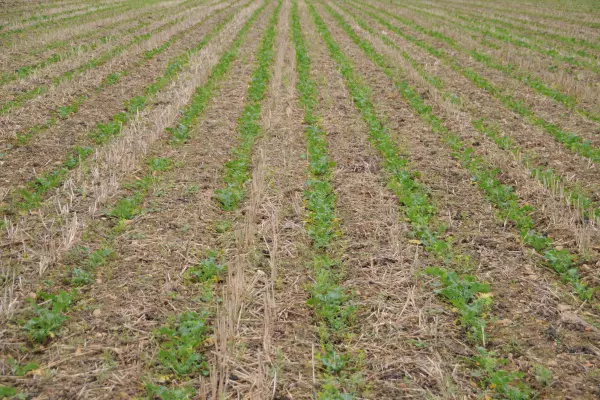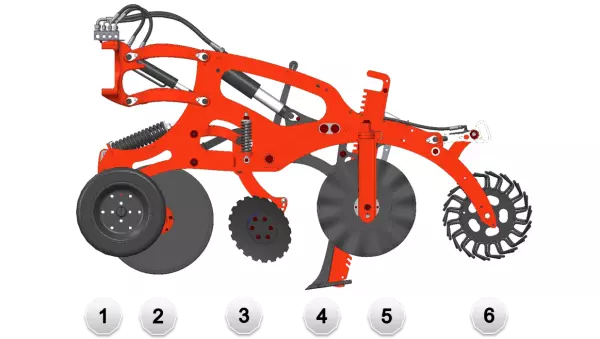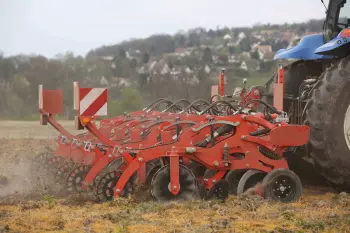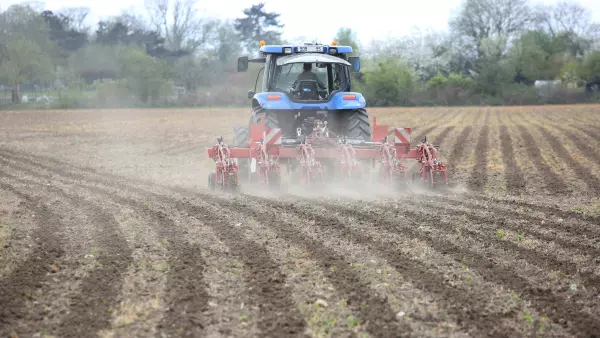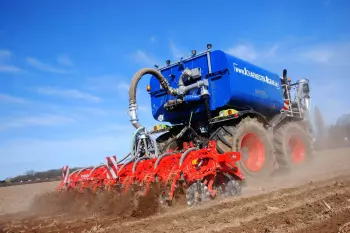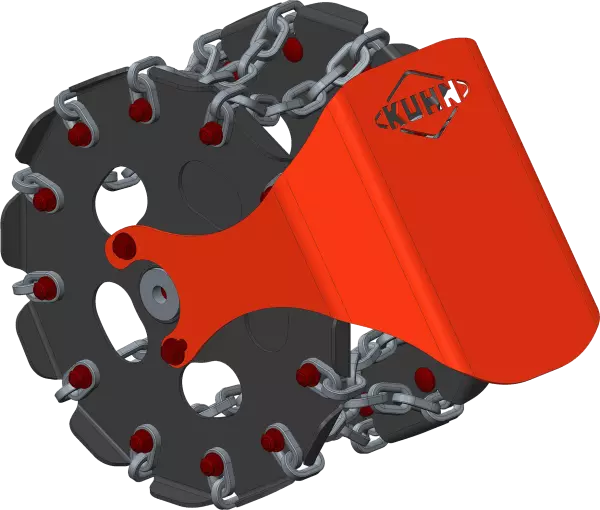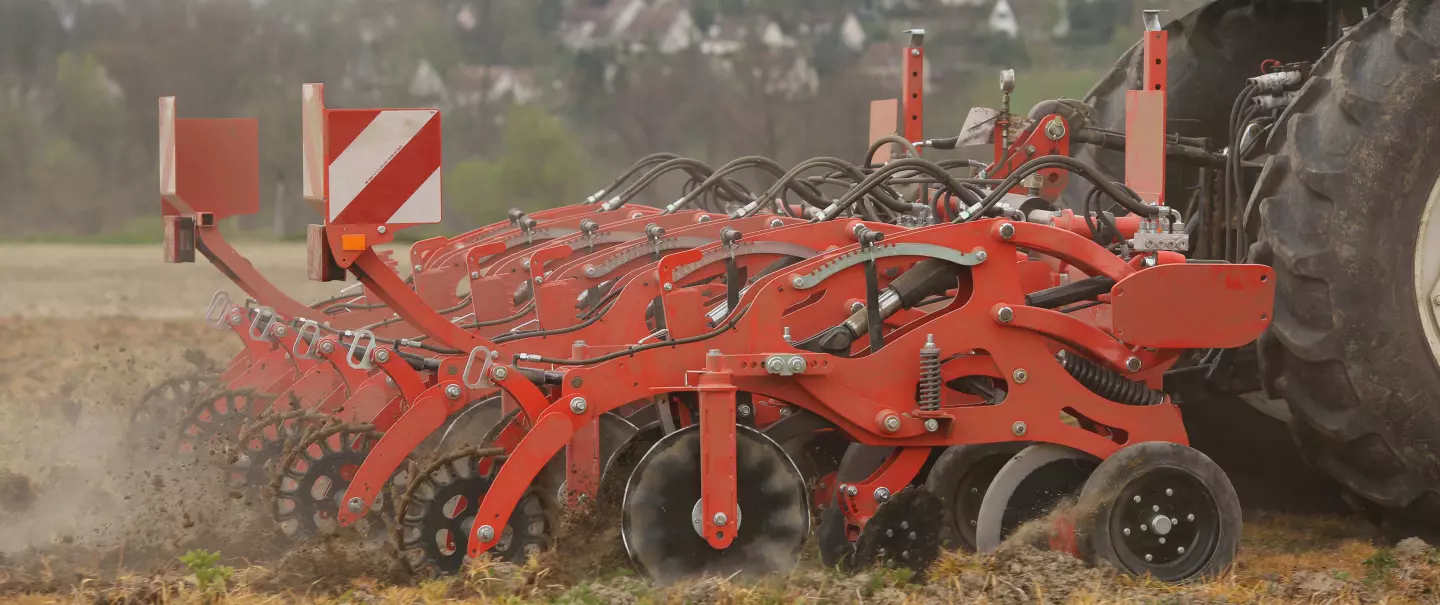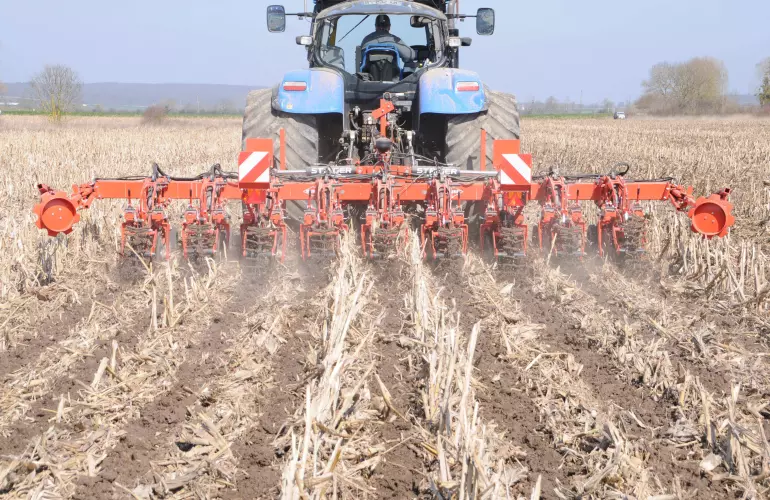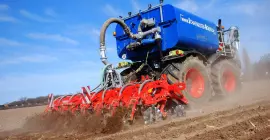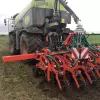
What is strip-till?
Strip-till is where only the future seed furrow is cultivated, preserving a layer of undisturbed residue in the inter-row. By working only in the seed furrow, you give the crop every chance of success just like a conventional preparation. In the inter-row, you benefit from the advantages of direct seeding: water conservation, supression of weeds, improved soil biology and reduced mechanisation loads.
Strip-till is defined by four points:
With the STRIGER 100, you accumulate the advantages:
Strip-till is defined by four points:
- Vertical tillage
- Cleaning of the furrow
- Fertilisation
- Preparation of the seedbed
With the STRIGER 100, you accumulate the advantages:
- Lower mechanisation costs with a reduction in working hours and less fuel consumption
- More economical use of fertiliser because it's placed exactly where you need it enabling you to reduce the dose
- Reduction in the use of weeding products thanks to the soil being covered with a layer of residue

